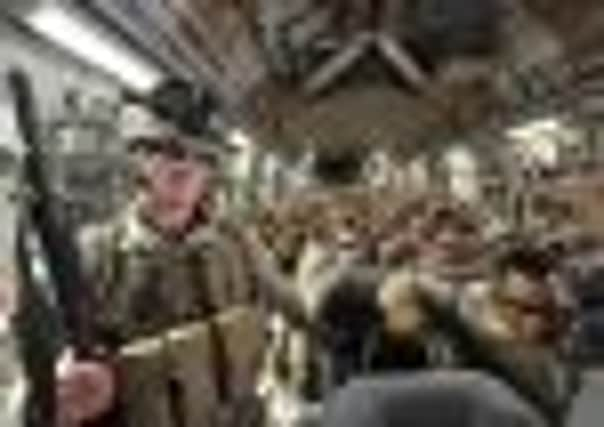Barack Obama targets Asia-Pacific to ‘turn page on decade of war’


During a rare visit to the Pentagon yesterday, the US commander-in-chief said America was “turning a page on a decade of war” and now needed to balance its books at home.
Spending cuts running into the hundreds of billions of dollars will almost certainly result in a reduced US ground force less prepared for large-scale conflicts, such as the Iraq and Afghanistan wars.
Advertisement
Hide AdAdvertisement
Hide AdMr Obama also fired a warning shot at China by outlining plans to refocus the US’s military on the Asia-Pacific region, while still keeping an eye on Iran’s nuclear ambitions.
Mr Obama was joined by his defence secretary Leon Panetta and chairman of the joint chiefs of staff General Martin Dempsey as he unveiled the results of a strategic review.
The military rethink was prompted in part by the need to find around $489 billion (£316bn) in spending cuts over the next decade.
A further $500bn (£323bn) could be slashed from the budget from January next year in a bid to bring down America’s soaring national deficit.
Mr Obama said: “We need to renew our economic strengths here at home, which is the foundation of our strength in the world. That includes putting our fiscal house in order.”
But he also noted the changing nature of warfare and the impact that had on the need for a large standing army.
When Mr Obama took office three years ago, 180,000 US soldiers were fighting in Afghanistan and Iraq. Today that number has been halved, he said.
While reducing the number of active soldiers, the plan calls for continued investment in new technologies to counter the threat from future adversaries.
Advertisement
Hide AdAdvertisement
Hide AdIt could also mean fresh money for a new long-range stealth bomber, cyber-warfare and anti-missile systems in response to a perceived growing threat from China.
Mr Obama said: “Yes our military will be leaner. But the world must know the United States if going to maintain our military superiority with armed forces that are agile, flexible and ready for the full range of contingencies and threats.”
It is thought that the Department of Defence plans to slash the number of regular soldiers from 570,000 to 490,000.
It could indicate the US is moving from a policy in which the ability to carry out two ground wars simultaneously if needed is a prerequisite of defence numbers. Mr Obama ruled out the use of soldiers in Libya during last year’s conflict.
But US intelligence and equipment played a crucial part in the removal of Col Muammar al-Gaddafi’s regime nonetheless.
It provided an example of how the US can still exert its military influence without ground forces.
Meanwhile, with the end of hostilities in Iraq and gradual withdrawal from Afghanistan, the US signalled it is turning towards the east.
“We’ll be strengthening our presence in the Asia-Pacific, and budget reductions will not come at the expense of this critical region,” Mr Obama said. But he added that the US will remain “vigilant” in the Middle East.
Advertisement
Hide AdAdvertisement
Hide AdMr Panetta signalled the refocus during a visit to Asia in the autumn. Pentagon chiefs are said to believe that Iraq and Afghanistan have prevented the US taking a greater role in the region.
The strategy document announced by Obama contained no specifics on troop reductions.
It also made clear that while some missions will be curtailed, none will be scrapped. “Wholesale divestment of the capability to conduct any mission would be unwise, based on historical and projected uses of US military forces,” the document said.